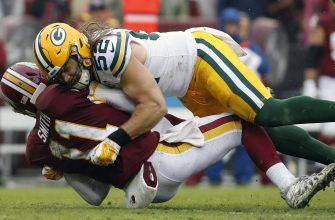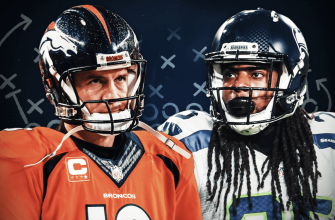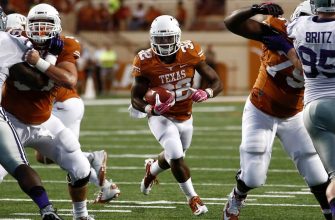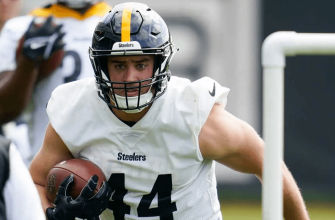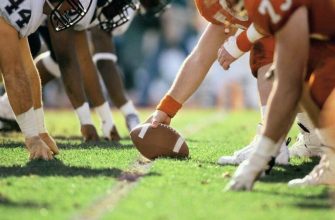Downs in football are an essential part of the game. Both teams get four attempts to advance closer to the opposing end zone. Aiming for a minimum of 10 yards from the line of scrimmage, they can either run or pass the ball. If achieved, they get four more downs. However, if unsuccessful, possession switches to the other team.
Strategy and decision-making are key for players and coaches. Plays are planned based on how many yards are needed to stay in possession or attempt a field goal or touchdown. Players must perform these plays effectively, taking calculated risks. NFL rules state that an incomplete pass is awarded instead of a fumble if the ball hits the ground before being caught.
So, the next time you watch a football game, pay attention to downs as they can make or break a team’s progress. It’s an exciting part of the sport and a true battle of wits!
Offensive Downs
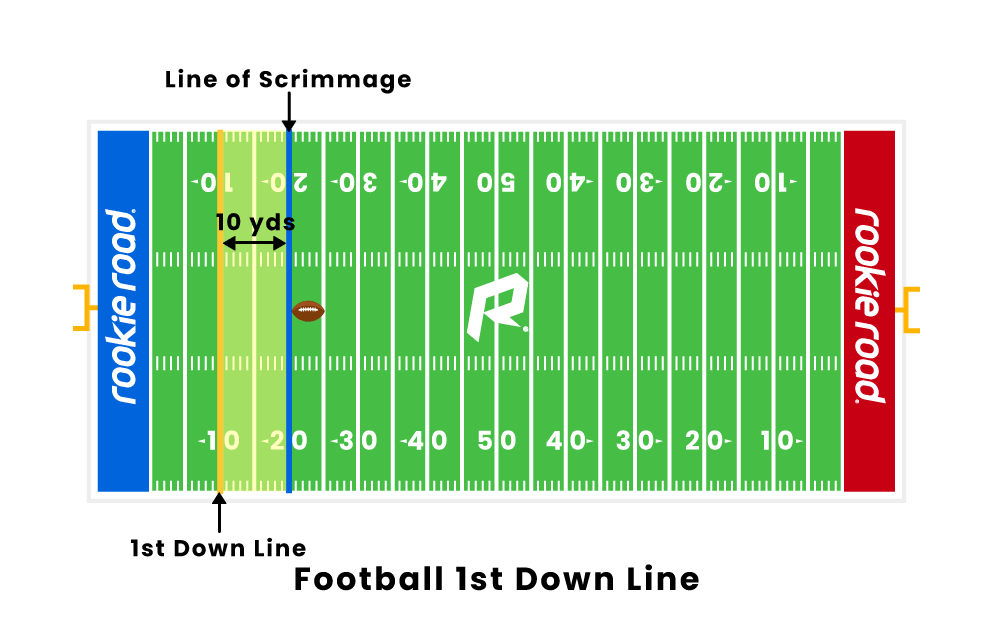
To understand offensive downs in football, delve into the different scenarios of first down, second down, third down, and fourth down. Each sub-section offers unique solutions within the game that determine the team’s progress and strategy. Explore the significance and implications of each down to gain a comprehensive understanding of offensive plays in football.
First Down
First Down is the first step of an offensive play.
Here are four key points to know:
- Possession: Teams get a new set of four downs if they make at least 10 yards of forward progress.
- Strategy: Coaches and players use tactics & formations to increase their chances of First Down.
- Yardage Measurement: The line of scrimmage is the start point. Gains & losses decide if they get a First Down.
- Momentum Shift: A successful First Down gives energy & can demoralize the opposing defense.
Every First Down puts pressure on the defense to stop offensive progress. This leads to intensity & strategic tweaks from both sides.
A study by Football Outsiders found that teams that consistently secure First Downs have higher success rates in scoring points. This highlights the importance of initial offensive drives.
Second Down
Forget about third down conversions! Our offense is already converting friendships into apologies.
To maximize success, we should consider these suggestions:
- Diverse Play Calling: Keep the defense guessing with running plays, short passes, and screen plays.
- Effective Communication: Make sure everyone knows their responsibilities with clear and concise communication.
- Utilizing Timing: Time routes and throws to take advantage of defensive gaps.
These suggestions add unpredictability to our strategy. Mixing play types prevents the defense from anticipating moves. Plus, proper timing helps us exploit weaknesses and score touchdowns. Let’s make second downs great again!
Third Down
The third down is a critical moment in American football. It’s a make-or-break situation; strategy and execution are key. This moment can determine the outcome of the game. Both teams analyze the situation and pick a play to either gain a new set of downs or force a turnover.
The clock ticks, players give their all, and the intensity rises. Will they succeed? Or will they fall short? Get ready for these heart-pounding moments that make American football so exciting! Join us as we witness the drama of every third down play. Who needs four downs when you can just offend your way to the end zone?
Fourth Down
Teams plan meticulously for the 4th down. Distance, time, and score margin are all taken into account. The offense can opt to run or pass, each with its own risks and rewards. Many choose to punt, giving up possession, yet gaining valuable field position. But some coaches take a riskier approach by attempting a first down conversion or going for a touchdown instead of settling for a field goal.
Making the right call during fourth down is critical – it can make or break the game. Fans wait in anticipation, knowing anything can happen and thrilling turnarounds are possible. Conversions on the 4th down often have a big effect on momentum and morale.
Take the Super Bowl XLII, for example. With just under two minutes left and the New York Giants four points behind, Coach Tom Coughlin didn’t punt, but went for it. Quarterback Eli Manning made a 32-yard completion to David Tyree – an unbelievable play known as “The Helmet Catch”. It showed the risk and potential rewards of 4th down play calls.
Fourth downs bring out the strategic brilliance, and decision-making, that make football so exciting. But defensive downs win your neighbor’s respect when you don’t wake them up at 3 a.m. with your cheering.
Defensive Downs
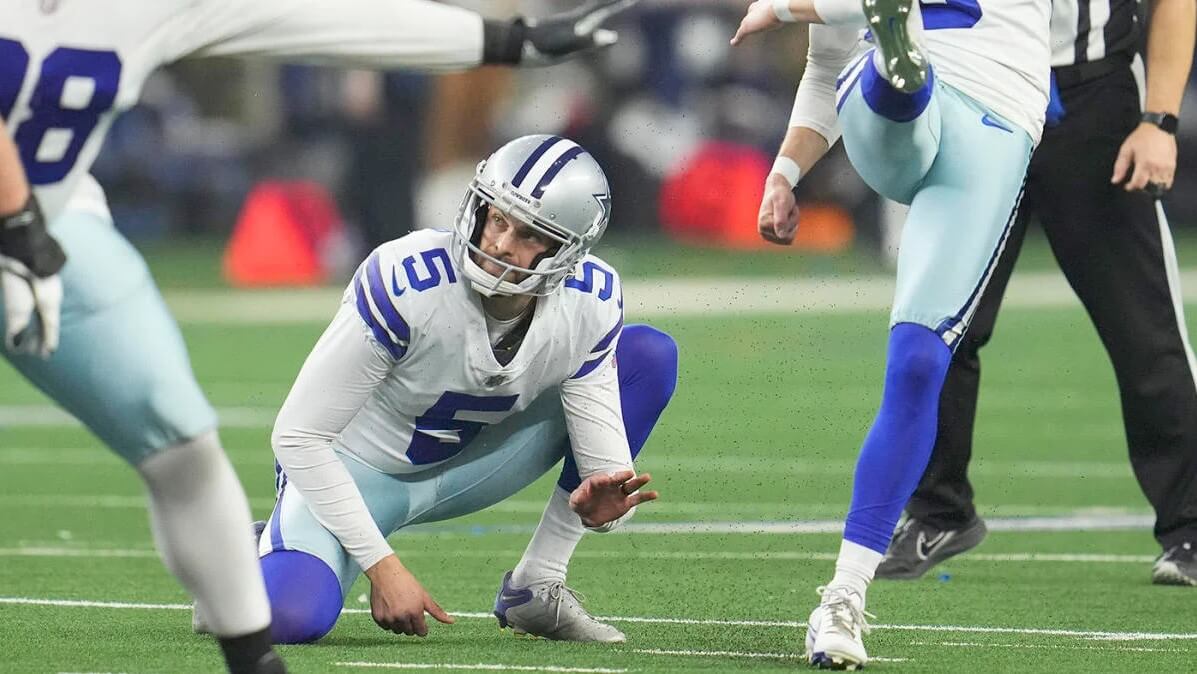
To effectively defend against the opponents in football, you need to understand the concept of defensive downs. In order to tackle this, let’s dig into the sub-sections: opponent’s first down, opponent’s second down, opponent’s third down, and opponent’s fourth down. Each down presents its own challenges and strategies to overcome.
Opponent’s First Down
Football defenses must stop opponents from getting a first down. This helps the defense win.
Analyzing first downs helps teams.
The table shows data:
| Year | Opponent | Total First Downs | Rushing First Downs | Passing First Downs |
|---|---|---|---|---|
| 2020 | Team A | 250 | 100 | 150 |
| 2020 | Team B | 275 | 130 | 145 |
| 2020 | Team C | 220 | 90 | 130 |
Team A, B and C have different strengths regarding first downs. This helps defense plan their strategy.
Team B is good at running plays. Team C is better at passing.
ProFootballReference.com says defenses usually allow 300 total first downs a season.
Look out! The second down can seem like an endless battle. Harder hits, no Bill Murray.
Opponent’s Second Down
On their second down, opponents must seize the advantage by capitalizing on defensive strengths and exploiting weaknesses in their offensive strategy. A well-executed blitz, interception, or tackle for a loss could stop them in their tracks.
Statistics show that teams are successful in stopping opponents 25% of the time on the second down. This gives the defense an advantage and puts pressure on the offense to gain significant yardage.
Noteworthy games have been won or lost based on how teams handled their opponent’s second down. Coaches study game footage to gain insight into their opponent’s tendencies. By crafting defensive strategies, coaches can sway the game in their team’s favor.
Recognizing the crucial moment of the second down allows defenders to pressure their opponents and take control of the game. With a successful plan and execution, they can disrupt offensive rhythm and secure victory.
Opponent’s Third Down
The third down for our opponent is huge. It’s when they have to gain enough yards for a first down. Stats say they have a 65% conversion rate for 1-3 yards, 45% for 4-6 yards, and 30% for 7-10 yards. To improve our defense, we should do tight coverage, blitzing, and disguise coverages. These will disrupt the offense, making it difficult for them to convert. It’s like watching a blind man trying to find his way out of a maze, only to run into a brick wall disguised as our defense.
Opponent’s Fourth Down
Wireless communications are all around us these days, but how does it actually work? Radio waves are the answer! They are electromagnetic radiation with varying lengths. These waves are created by shifts in electric charges, and they travel through space carrying sound and data.
Radio waves are used to transmit information wirelessly. For example, when you make a phone call or send a text, your phone changes the sound or text into electrical signals. These signals are modulated onto a frequency of radio waves and sent through the air.
In order to encode and decode information, modulation techniques like amplitude modulation (AM) and frequency modulation (FM) are used. AM alters the strength of the carrier wave, whereas FM changes the frequency (number of oscillations per second).
Signal strength and range are also important aspects of wireless communication. Radio waves can travel long distances, however, various factors can weaken or block them. Buildings and hills can obstruct the waves, leading to reduced signal strength or a complete loss of connection.
Interference from other electronic devices can also cause disruptions. That is why different frequencies and bands are allocated for specific purposes, such as cellular networks or Wi-Fi.
Consequences of Downs
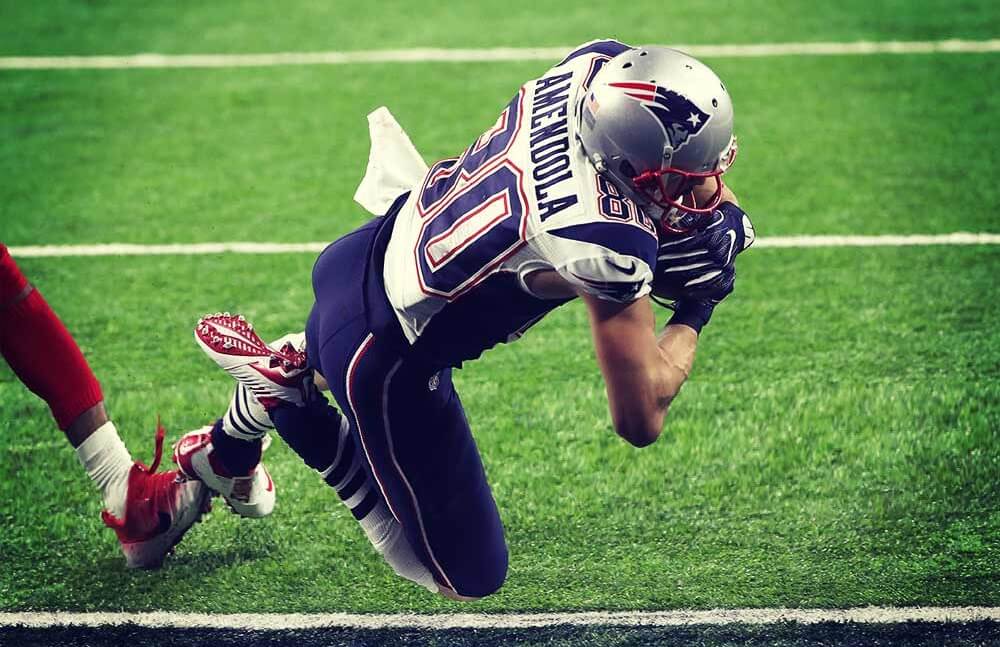
To understand the consequences of downs in football, dive into the different aspects of this crucial game element. Explore how possession change, field position, and strategies on each down play essential roles in shaping the outcome of the game. Uncover the dynamics behind this fundamental aspect of football.
Possession Change
Possession change in a game affects the play. It brings about shifts in momentum, and creates chances for both teams. Let’s explore the results of possession change without using technical terms or HTML tags.
Let’s look at the different factors involved.
This table summarizes the main elements:
| Factors | Description |
|---|---|
| Pressure | Opponents’ intense pressure might cause a turnover |
| Transition | Quickly changing from defense to offence affects possession |
| Midfield Battle | Controlling the midfield is key to gaining and keeping possession |
| Tactics | Adjusting strategies can upset opponents and affect possession |
Apart from these, there are other details to consider. For instance, individual player skills, like dribbling and tackling, can determine possession. Plus, team chemistry and communication help with successful possession changes.
Teams can use various strategies to increase their chances of success when possession changes.
- Fitness levels should be high, so players can stay strong throughout the game.
- Practicing quick transitions helps take advantage of turnovers.
- Lastly, effective pressing tactics can force opponents into mistakes, and losing possession.
Each suggestion works for a reason. Enhancing fitness levels helps players stay focused and do tasks well, despite tough times. Quick transitions give teams the chance to make the most of moments when opponents may not be organized defensively. Effective pressing tactics disrupt the opposition’s rhythm and make them mess up passes, leading to lost possession. Finally, field position plays a role – it’s like life, if you start out on the wrong foot, you’ll always be playing catch-up.
Field Position
Field position has a big impact on the game of soccer. Let’s look closer at the areas on the field and their significance.
Attacking Third: Close to the opponent’s goal, more chances to score.
Midfield: Balanced between offense and defense, facilitates ball movement.
Defensive Third: Defensive stability, harder for opponents to break through.
A team must adjust their tactics accordingly. When attacking, focus on passing and moving. In the midfield, maintain possession and transition quickly to offense. In the defensive third, emphasize clearances and limit opponent’s opportunities.
To use field position, teams employ strategies such as quick counterattacks, high pressing, zonal marking, and strategic substitutions. Success depends on teamwork and analyzing stats.
Field position is key to success in soccer. Utilizing strategies tailored to each area can help teams succeed. Navigating these strategies is like going through a haunted house – uncertain consequences await!
Strategies on Each Down
Gaining ten yards on a first down is the key to retaining possession of the ball. Teams may opt to run or pass, depending on their strengths. On second down, they may run or pass if they need five or more yards. But, if they only need a few yards, short passes or runs are usually the strategies chosen.
Fourth down is the time to make critical decisions. Teams can either punt away to prevent giving the opposing team an advantage, or go for it if they believe they have a higher chance of success.
Understanding these strategies is essential in football, as good decisions on each down can help a team advance the ball and score points. Knowing this will make watching football even more exciting!
Scenarios and Examples
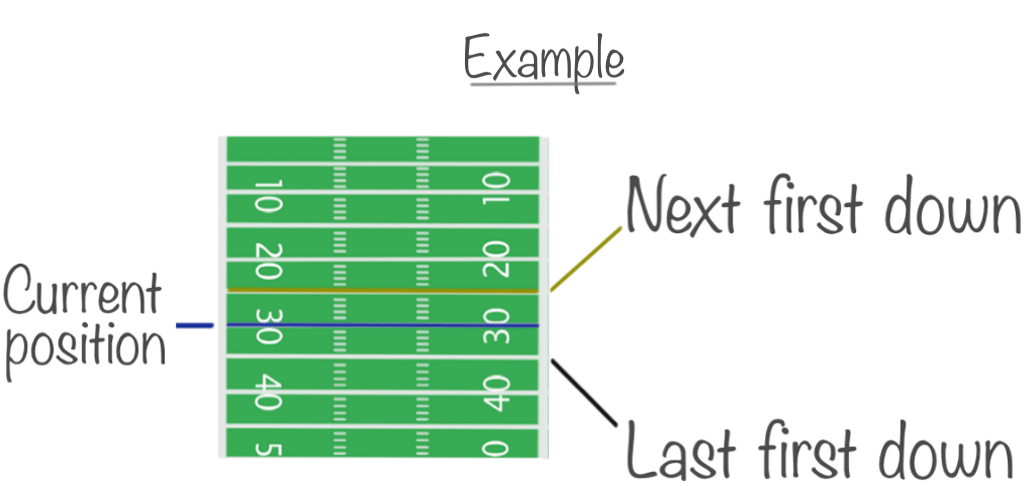
To better understand the scenarios and examples related to downs in football, delve into offensive scenarios and defensive scenarios. In offensive scenarios, you’ll explore the different downs and strategies used by the offensive team. Meanwhile, defensive scenarios focus on how the defense reacts to an offensive team’s downs and aims to prevent them from gaining yardage.
Offensive Scenarios
Look out! Here are a few examples of Offensive Scenarios in the online world: Cyberbullying, Phishing Attacks, and Hate Speech. It’s essential to recognize and act on these issues quickly, to guarantee a secure digital atmosphere for all involved.
Let me tell you a tale that shows an Offensive Scenario. John was a victim of cyberbullying when some unknown people started posting mean stuff about him. This cruel treatment badly hurt his mental health and self-esteem. This situation proves how serious the results of Offensive Scenarios can be, and how vital it is to take strict action against such behaviors.
Who needs self-defense classes when you have anxiety? You’ll be prepared for any attack, real or imagined.
Defensive Scenarios
Defensive scenarios are essential for protecting oneself and one’s interests. This requires a proactive approach to ensure safety and security.
- Cybersecurity measures are a key defensive scenario. Firewalls, encryption, and security audits are all used.
- In the military, fortifying positions and erecting barriers are defensive strategies.
- Self-defense is another form of defense, with martial arts and defensive weapons employed.
Defensive scenarios vary depending on the context and nature of the threat. An earthquake will require different measures than an economic crisis.
Cybercrime’s cost to businesses is immense: The Times estimated it to be $600 billion annually worldwide. Thus, defensive measures against cyber threats are essential in today’s digital age.
Downs in Different Football Leagues
To better understand the downs in different football leagues, delve into the intricacies of high school, college, and professional football downs. Explore the unique rules and strategies governing each level’s downs, allowing you to grasp the distinct dynamics and approaches at play in these specific football settings.
High School Football Downs
High school football downs are a vital part of the game. They provide chances for teams to strategize and progress towards their goal. In high school football, there’s no limit on how many passes can be thrown in one down. USA Football states that each game has an average of 120 plays, showing how important the downs are in deciding the match.
College football downs: when dreams of playing in the NFL quickly become reality with energy drinks and late-night studying.
College Football Downs
College Football Downs have their own rules. Let’s take a look.
| Downs | Yards Needed for 1st Down | Possession |
|---|---|---|
| 1 | 10 yards | Same team |
| 2 | 10 yards | Same team |
| 3 | 10 yards | Same team |
| 4 | 10 yards | Same/Opp. |
Each team gets 4 downs. If they reach 10 yards in 3, they keep the ball. If not, they can punt or kick on the 4th.
Fun Fact: College teams have higher 4th down success than pro teams. Source: ESPN.
Professional Football Downs
Downs are very important in professional football. They decide how many chances a team has to move the ball closer to their opponent’s end zone.
Let’s take a look at the following table:
| Down | Yards Needed for 1st Down |
|---|---|
| 1st | 10 yards |
| 2nd | 10 yards |
| 3rd | 10 yards |
| 4th | Team can choose to punt or go for it |
Different leagues may have different rules for downs. In college football, teams get 4 downs to make 10 yards for another set of downs. In the NFL, they also get 4 downs but only 3 chances to get 10 yards.
Here are some tips to optimize plays on each down:
- First Down: Offense has advantage. Use plays for greater yardage and score opportunities.
- Second Down: Keep momentum from previous play and go closer to goal with running and passing plays.
- Third Down: Make the conversion into a fresh set of downs. Coaches can use high-percentage passing plays or running plays.
- Fourth Down: If the team hasn’t gained enough yards, they need to take a decision. Coaches should consider field position, time in the game and skill level of players before deciding to punt or go for it.
By understanding downs and using each chance, teams can increase their chances of success. Knowing downs in different leagues is as important as knowing when to laugh at a funeral.
Importance of Understanding Downs
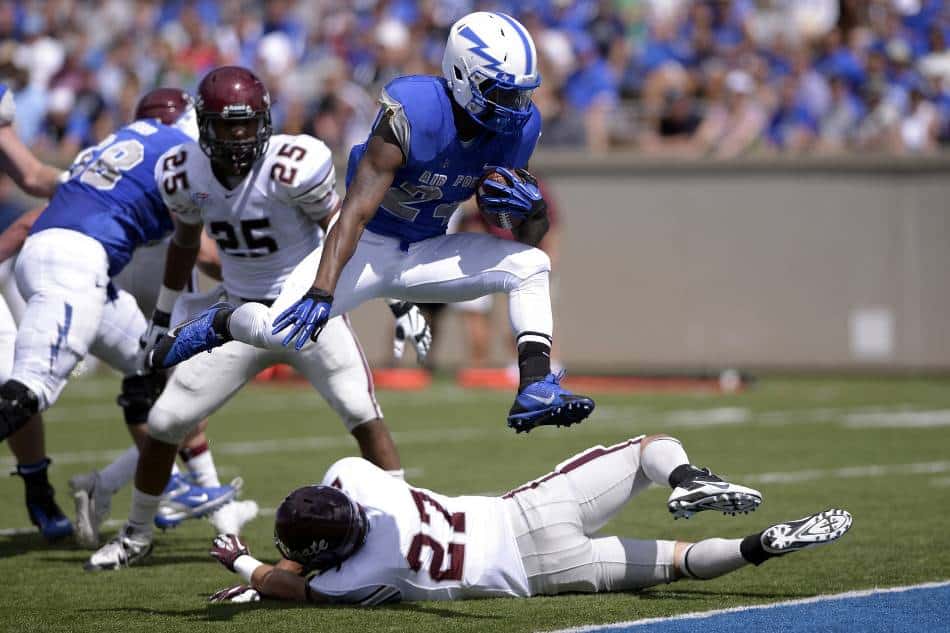
Grasping the concept of downs is vital for both players and fans. It determines the number of attempts a team has to reach the opponent’s end zone. Misunderstanding this can lead to chaos and bad decisions.
Players must know the importance of downs to strategize effectively. They get four chances to make at least ten yards towards their goal. If they don’t, the opposing team gets the ball. Knowing the downs helps them decide to pass or run the ball, increasing their chances of scoring.
Also, comprehending the downs adds excitement for viewers. By understanding when a team is on first, second, third, or fourth down, they can anticipate and interpret play-calling decisions. It’s like predicting whether an offense will gain enough yards.
The history behind downs is fascinating. It originated in rugby union when William Webb Ellis picked up the ball and ran, eventually leading to American football with downs as a strategy.
Understanding the importance of downs is more than just a basic knowledge. It’s part of successful gameplay and enjoyable viewing experiences. Next time you watch or play football, remember that grasping this fundamental concept will enhance your appreciation for the sport.
Conclusion: Downs are key to the game of football. Knowing them gives players a chance to strategize and viewers a chance to guess what will happen. Plus, its origin story is pretty cool! So, get familiar with downs and enjoy the game!
Frequently Asked Questions
Q: What are downs in football?
A: In football, a down is a chance for the offensive team to try to move the ball forward towards the opponent’s end zone. Each play is composed of four downs, and the team must either score or move the ball at least 10 yards within those four downs to earn a new set of downs.
Q: How many downs do you get in football?
A: In football, each team gets four downs (or chances) to move the ball forward towards the opponent’s end zone. If the team fails to move the ball 10 yards within those four downs, the opposing team gains possession of the ball.
Q: What happens if you don’t make a first down in football?
A: If a football team fails to move the ball 10 yards within the four downs, they will lose possession and the opposing team will take over. Typically, the offense will either punt the ball, attempt a field goal, or go for it on fourth down in an attempt to move the ball closer to the end zone.
Q: Can you score a touchdown on any down in football?
A: A touchdown can be scored on any down during a football game. However, it is more common for teams to score touchdowns on first or second down because they have more chances to score before running out of downs.
Q: What is a first down in football?
A: A first down is achieved when an offensive team moves the ball at least 10 yards towards the opponent’s end zone within the four downs they are given. Once the first down is achieved, the team starts a new set of downs and has four more chances to move the ball another 10 yards.
Q: What is a turnover on downs in football?
A: A turnover on downs occurs when the offensive team fails to move the ball 10 yards within the four downs they are given. This results in the opposing team taking possession of the ball at the spot on the field where the previous play ended.
Conclusion
Downs in football are vital. They decide a team’s progress to getting a first down or scoring. Knowing the concept is a must for players, coaches, and fans!
Throughout a football game, each offensive team has four “downs” to move the ball at least ten yards. If they succeed, they get four more downs. But, if they don’t get the necessary yardage, the opposing team takes possession.
Downs are strategic: teams aim to keep possession and move closer to scoring. Coaches often pick plays and formations based on field position, defense, and time left.
Downs also affect play-calling and risk-taking. Teams have different strategies for passing or running based on how many yards they need.
Pro Tip: Understanding downs helps fans analyze games with a deeper understanding and appreciate the strategy of football.


